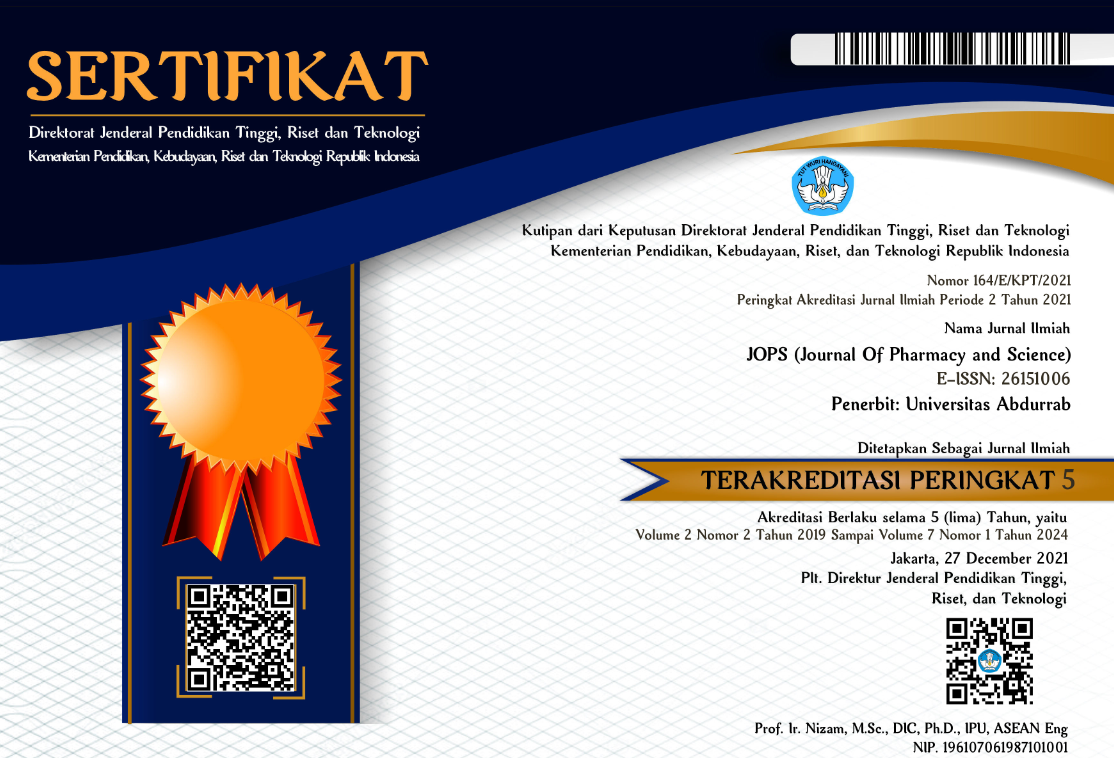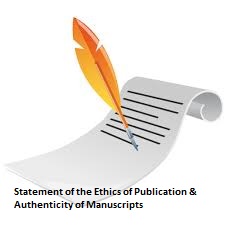The Relationship between Routine Feeding of Food Containing Calcium and Vitamin D by Mothers with the Incidence of Stunting in Toddlers in Sijunjung Regency–West Sumatera
Abstract
Stunting is a disruption in the growth and development of children within 1000 days of life due to chronic malnutrition and recurrent infections which is characterized by their length or height being below standard. Calcium and vitamin D are nutrients that influence bone mineralization. Good bone mineralization during growth allows optimal linear growth. This study aims to determine the relationship between providing food containing calcium and Vitamin D with the incidence of stunting in children under five in Sijunjung Regency. This research is a quantitative research with an analytical observational design with a cross sectional approach method. The number of samples in this study was 36 people with a distribution of 13 men (35.71%) and 23 women (64.29%). There were 5 (38.46%) male toddlers and 9 (39.13%) female toddlers who experienced stunting. Based on data analysis carried out using chi-aquare (X2), it was found that p=0.021 and p=0.018 for the relationship between calcium and vitamin D intake and the incidence of stunting. Based on this, it shows that p < 0.05. Based on the research results, it can be concluded that there is a significant relationship between providing food containing calcium and vitamin D and the incidence of stunting in toddlers in Sijunjung Regency.
References
Chairunnisa, E., Kusumastuti, A.C. and Panunggal, B. (2018) ‘Asupan Vitamin D, Kalsium dan Fosfor pada Anak Stunting dan Tidak Stunting Usia 12-24 Bulan Di Kota Semarang’, Journal of Nutrition College, 7(1), p. 39. Available at: https://doi.org/10.14710/jnc.v7i1.20780.
Chunhua Song,1 Hongzhi Sun,2 Ben Wang,1 Chunli Song,3 and Hongying Lu1, 2021, Association Between Vitamin D Status and Undernutrition Indices in Children: A Systematic Review and Meta-Analysis of Observational Studiesdoi: 10.3389/fped.2021.665749
Departemen Ilmu dan Teknologi Pangan, Fakultas Teknologi Pertanian, Institut Pertanian Bogor, Bogor, Indonesia et al. (2014) ‘Asupan Kalsium dan Vitamin D pada Anak Indonesia Usia 2 – 12 Tahun’, Jurnal Teknologi dan Industri Pangan, 25(1), pp. 83–89. Available at: https://doi.org/10.6066/jtip.2014.25.1.83.
Haddad, L. et al. (2015) ‘The Global Nutrition Report 2014: Actions and Accountability to Accelerate the World’s Progress on Nutrition’, The Journal of Nutrition, 145(4), pp. 663–671. Available at: https://doi.org/10.3945/jn.114.206078.
Kementerian Kesehatan Republik Indonesia. Standar Antropometri Penilaian Status Gizi Anak. Jakarta: 2011.
Kementerian Kesehatan Republik Indonesia. Riset Kesehatan Dasar 2013. Jakarta: 2013.
Kementerian Kesehatan Republik Indonesia. Hasil Pemantauan Status Gizi 2016. Jakarta: 2017.
Kemenkes, 2022, Apa itu Stunting??. https://yankes.kemkes.go.id/view_artikel/1516/apa-itu-stunting
Millward, D.J. (2017) ‘Nutrition, infection and stunting: the roles of deficiencies of individual nutrients and foods, and of inflammation, as determinants of reduced linear growth of children’, Nutrition Research Reviews, 30(1), pp. 50–72. Available at: https://doi.org/10.1017/S0954422416000238.
Mokhtar, R.R. et al. (2018) ‘Vitamin D status is associated with underweight and stunting in children aged 6–36 months residing in the Ecuadorian Andes’, Public Health Nutrition, 21(11), pp. 1974–1985. Available at: https://doi.org/10.1017/S1368980017002816.
Onny Azza Ferani, 2019, Faktor – Faktor Risiko Kejadian Stunting Pada Anak Balita Usia 24 – 59 Bulan Di Wilayah Kerja Puskesmas Siulak Mukai Kerinci Jambi
Peacock, M. (2010) ‘Calcium Metabolism in Health and Disease’, Clinical Journal of the American Society of Nephrology, 5(Supplement_1), pp. S23–S30. Available at: https://doi.org/10.2215/CJN.05910809.
Prendergast, A.J. and Humphrey, J.H. (2014) ‘The stunting syndrome in developing countries’, Paediatrics and International Child Health, 34(4), pp. 250–265. Available at: https://doi.org/10.1179/2046905514Y.0000000158.
Puspitasari, F.A., Widowati, A.W. and Kurniasih, Y. (2023) ‘Edukasi Gizi yang Tepat Dalam Mencegah Stunting dengan Menggunakan Media Booklet dan Poster’, 01(01).
Ramadani, Nurul , 2018, Hubungan Asupan Kalsium dan Vitamin D dengan Kejadian Stunting pada Anak Balita di Kecamatan Nanggalo Kota Padang,
Research Institute (Ifpri), I.F.P. (2016) Global Nutrition Report 2016 From Promise to Impact Ending Malnutrition by 2030. 0 edn. Washington, DC: International Food Policy Research Institute. Available at: https://doi.org/10.2499/9780896295841.
Ross AC, Taylor CL, Yaktine AL, Valle HBD, editors. Committee to Review Dietary Reference Intakes for Vitamin D and Calcium. Washington: The National Academies Press: 2011.
Shruti P Shertukde, Danielle S Cahoon, Belen Prado, Kelly Copeland Cara, and Mei Chung, 2022, Calcium Intake and Metabolism in Infants and Young Children: A Systematic Review of Balance Studies for Supporting the Development of Calcium Requirements, . doi: 10.1093/advances/nmac003
Song, Chunhua et al. (2021) ‘Association Between Vitamin D Status and Undernutrition Indices in Children: A Systematic Review and Meta-Analysis of Observational Studies’, Frontiers in Pediatrics, 9, p. 665749. Available at: https://doi.org/10.3389/fped.2021.665749.
Sudfeld, C.R. et al. (2015) ‘Vitamin D Status Is Associated with Mortality, Morbidity, and Growth Failure among a Prospective Cohort of HIV-Infected and HIV-Exposed Tanzanian Infants’, The Journal of Nutrition, 145(1), pp. 121–127. Available at: https://doi.org/10.3945/jn.114.201566.
Trihono, Atmarita, Tjandrarini DH, Irawati A, Utami NH, Tejayati T, et al. Pendek (Stunting) di Indonesia, Masalah dan Solusinya. Jakarta: Lembaga Penerbit Balitbangkes; 2015.
Van Stuijvenberg, M.E. et al. (2015) ‘Low intake of calcium and vitamin D, but not zinc, iron or vitamin A, is associated with stunting in 2- to 5-year-old children’, Nutrition, 31(6), pp. 841–846. Available at: https://doi.org/10.1016/j.nut.2014.12.011.
Wati, R.W. (2021) ‘Hubungan Riwayat BBLR, Asupan Protein, Kalsium, dan Seng Dengan Kejadian Stunting pada Balita’, Nutrizione: Nutrition Research And Development Journal, 1(2), pp. 1–12. Available at: https://doi.org/10.15294/nutrizione.v1i2.50071.
Yuningsih, Y. (2022) ‘Hubungan Status Gizi dengan Stunting pada Balita’, Oksitosin : Jurnal Ilmiah Kebidanan, 9(2), pp. 102–109. Available at: https://doi.org/10.35316/oksitosin.v9i2.1845.
Copyright (c) 2023 JOPS (Journal Of Pharmacy and Science)

This work is licensed under a Creative Commons Attribution-NonCommercial-ShareAlike 4.0 International License.
1. Copyright of all journal manuscripts is held by the JOPS (Journal Of Pharmacy and Science)
2. Formal legal provisions to access digital articles of electronic journal are subject to the provision of the Creative Commons Attribution-ShareAlike license (CC BY-NC-SA), which means that JOPS (Journal Of Pharmacy and Science) is rightful to keep, transfer media/format, manage in the form of databases, maintain, and publish articles.
3. Published manuscripts both printed and electronic are open access for educational, research, and library purposes. Additiponally, the editorial board is not responsible for any violations of copyright law.
licensed under a Creative Commons Attribution-ShareAlike 4.0 International License.
 PDF (Bahasa Indonesia)
PDF (Bahasa Indonesia)
 Abstract views: 101
Abstract views: 101
 downloads: 106
downloads: 106

 :
:
1.png)








